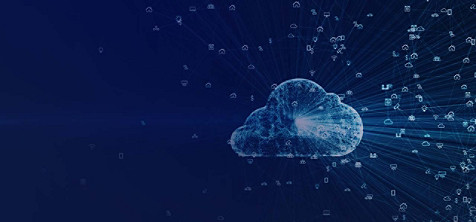What is cognitive computing?
Cognitive computing refers to technology platforms influenced by cognitive science to simulate the human thought process and encompass artificial intelligence and signal processing. This may include capabilities like machine learning, reasoning, natural language processing (NLP), speech and vision recognition, human-computer interaction (HCI) and more.
What are the business benefits of cognitive computing?
- Improved data collection and interpretation: Cognitive computing applications analyze patterns and apply machine learning to replicate human capabilities such as deduction, learning, perception and reasoning. Both structured and unstructured data can be collected from diverse sources, and in-depth cognitive analytics are applied to interpret the data. That information can then be used to improve visibility into internal processes, how your products and services are being received, what your customers’ preferences are and how best to build their loyalty.
- Troubleshooting and error detection: By applying cognitive concepts to a robust technological environment, cognitive computing can help you more quickly and accurately identify issues in business processes and uncover opportunities for solutions.
- More informed decision-making: Through its data collection and analysis capabilities, cognitive computing allows for more informed, strategic decision-making and business intelligence. This can lead to more efficient business processes, smarter financial decisions, and overall improved efficiency and cost savings.
- Improved customer retention: Cognitive computing sets the stage for a more helpful, informed customer-to-technology experience, improving customer interactions. Its ability to interact with and understand and learn from humans greatly improves overall customer retention and satisfaction.
How does cognitive computing enhance human expertise?
Cognitive systems can simulate human brain activity to solve the most complex problems in business process management. It can accelerate, enhance and scale human expertise by:
- Understanding natural language (or sensory data) and interacting naturally with humans, providing non-biased advice autonomously
- Reasoning—that is, forming hypotheses, making arguments and planning—and helping users by analyzing both content and context
- Learning, sensing and applying meaning that creates new insights and value
- Offering progressive support to improve operational efficiency
How can an organization evolve from traditional business processing to cognitive business processing?
Transitioning from traditional business processing to cognitive business processing requires systematic execution and adoption. To be cognitive, the process must think and learn on top of the traditional framework. This process involves enriching the traditional process with knowledge, enhancing the system with decision-making and expanding the business with insights.
The overall approach can be subdivided into four high- level phases:
- Discover: On a high level, the journey to cognitive processing starts with collaborative discovery to learn and define existing business processes in a launch workshop. This requires assessing organizational readiness and identifying process candidates through a cognitive opportunity assessment.
- Define: The next phase is to define actionable insights captured from actual process usage and business pain points. These findings will help catalog potential areas for cognitive capabilities, leading to plans based on the list and associated technology needs.
- Design: In the design phase, the future cognitive process model is identified along with a strategy to extract insights from non-structured data.
- Develop: Finally, the identified, recognized and explored capabilities are implemented using prototypes for testing in real-life use cases.
What are some real-world business examples of cognitive computing?
In healthcare, hospital care management systems can leverage data from social media to examine the spread of diseases and track the outbreak of pandemics. For example, during the outbreak of dengue fever in a city, hospitals can monitor Twitter feeds to identify symptoms experienced by the public. Technologies such as geolocation can identify local tweets; natural-language processing can be applied to determine which tweets concern a particular ailment. Such real-time analyses can help health insurance providers to track and predict outbreaks and take proactive measures, such as urging community members to get vaccinated or stock up on supplies.
In banking, cognitive business process management (BPM) is widely used to determine customer satisfaction. For example, when customers are approved for a loan, they are directed to the bank’s loan- servicing department, which ensures proper payment collection, as well as any changes to the payment plan. This involves inbound and outbound calls that generate call transcripts. By applying cognitive analysis to this process, the bank can then determine whether its employees are asking the right questions, how polite they are, and whether they are working efficiently. The net result is inevitably a better experience for the customer and the bank.
In customer service, companies can use cognitive technologies to analyze information from customers in the form of letters, email or other communication. For instance, when handling customers with strong negative sentiments, companies can deploy sentiment analysis. This will help direct those customers to the employees who can best serve them, which will in turn boost customer satisfaction.
In recruiting, managers faced with hundreds of applications for dozens of openings typically spend enormous amounts of time trying to identify the best candidates, using just simple intuition and other limited tools. Cognitive computing can change all this, as it looks beyond the formal attributes of candidates (such as their degrees or years of work experience) and incorporates more modern techniques of data collection.



















